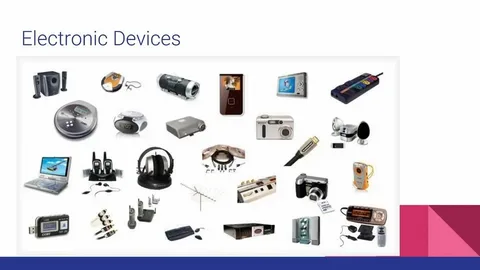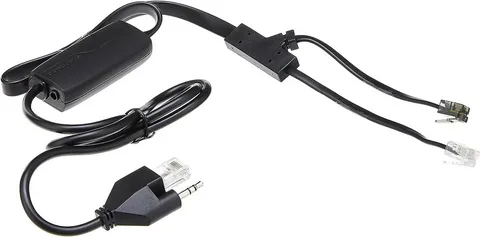Electronic Vision | Innovating Vision with Intelligent Technology
Smart glasses and other electronic vision technologies are empowering people with visual limitations to improve their quality of life. The advancements in the field of vision technology gives hope to many who suffer from visual impairments to once again experience the joys of life. This blog aims to explain everything from what is electronic vision to the iris vision cost, and even answer questions like, are there glasses to help blind people see? Now that there is an entire world for individuals who lack vision and low vision, people are often left asking, how does modern technology assist those with vision loss.
Let’s examine together how new technology is reshaping the landscape for those with vision loss.
What is Electronic Vision?
Electronic vision utilizes various advanced digital techniques such as wearable devices, smart optics, image processing, and even brain machine interfaces to augment, replicate, or improve vision. Electronic vision encompasses smart glasses, VR and AR headsets, and several other products. Sensors, cameras, and computers work together to capture images, analyze them, and modify them to suit the vision impaired, which is then presented on a screen, allowing the users to see the world.
Electronic vision devices provide a unique approach to vision correction. Instead of modifying the aperture or focus of the eyesight as glasses do, these devices lessen contrast, brighten brightness, and even translate images into sound. People with conditions such as macular degeneration, retinitis pigmentosa, and other forms of low vision will benefit greatly from this technology.
Is It Possible to See Without Aids?
Absolutely! Electronic glasses will not bring back full vision to the completely blind but, they can make a difference for low vision or partially blind users. With the use of augmented reality (AR), cameras and artificial intelligence (AI), these glasses are capable of transforming images in real time, allowing the user to better understand and walk around their environment.
How do These Glasses Function?
Camera Capture: The high resolution camera in the glasses records real-life pictures.
Processing Unit: Either an internal or external processor increases the image with color, zoom, and light while even transforming words into sound.
Display Technology: Edited images can be shown on particular monitors or directly projected on the users retina.
Interactive Features: Some models enable the user to change vision modes, color, and zoom.
Well-Known Smart Glasses For The Blind
IrisVision – One of the best advanced smart glasses for vision improvement (more on this later).
eSight – Specializes in providing electronic vision aids for patients suffering from significant central vision loss
NuEyes – Smart image glasses equipped with voice command capabilities for wireless processing of images.
OrCam MyEye – Advanced reader that integrates eyes-free text reading and intelligent object recognition functionalities.
These devices are enabling thousands of people to become more self-sufficient by improving their mobility and allowing them to read, identify faces, and move around their surroundings with more confidence.
What Are The Uses Of Electronic Glasses?
Different types of vision impairment will require different actions to be taken in relation to the features provided by electronic glasses. Their main functions consist of:
1. Helping Users With Low Vision
Numerous glasses specifically assist users suffering from macular degeneration, diabetic retinopathy, and glaucoma by increasing contrast and magnifying images. As a result, users are able to see faces, read books, and watch television more easily.
2. Viewing Printed Material In Real-Time
Some electronic glasses have text-to-speech (TTS), allowing users to point at a piece of text such as a newspaper or menu and have it read out loud. This TTS functionality is ideal for people with advanced vision loss that have difficulty dealing with printed materials.
3. Recognizing Faces and Objects
Using AI technology, smart glasses are capable of recognizing friends’ faces, household items, or even reading street signs. This can help visually impaired users identify items and people, making daily activities easier and improving navigation in new environments.
4. Integrating AI with Augmented Reality
Some advanced electronic glasses feature augmented reality (AR), overlaying crucial details on the screen. These AI features enable the glasses to analyze a scene, provide voice assistance, and identify obstacles.
5. Hands-Free and Voice Command Functionality
A significant number of electronic eyewear devices operated by voice, allowing hands-free operation. This feature enhances convenience in the daily life of users as no buttons have to be pressed.
All of these capabilities would give an individual with vision impairments more independence and accessibility, making electronic glasses an essential tool for improved quality of life.
What Is The Cost Of IrisVision?
IrisVision is one of the most popular and widely used electronic vision devices designed for people with low vision. It was developed together with Samsung and vision scientists, making it a trusted assistive technology option.
Pricing Information for IrisVision
According to the features and model incorporated, IrisVision has varying prices. On the lower end, it costs around $2,950. Some of the factors which affect the price include:
Additional features like a custom software FOV and wider field of view.
Subscription services for software updates and cloud services.
Financing options that allow payments to be made in installments as opposed to a single payment.
IrisVision and Insurance Coverage
As always, insurers do not pay default for electronic vision devices, however, some programs may assist claim partial payment of medical assistive technology.
Grants, charities, and vision rehabilitation programs sometimes help obtain funding for these life-changing devices.
Target Audience of Electronic Vision Technology
These devices are intended to aid people with a good range of vision disabilities, including:
Macular Degeneration – Enables an individual with central vision loss to magnify and enhance the contrast of the required objects.
Glaucoma – Helps in peripheral vision loss by improving edge detection.
Diabetic Retinopathy – Improves visibility in low light and sharpens images.
Retinitis Pigmentosa – Some electronic glasses enable better night vision and contrast adjustments.
Legal Blindness – People with a minimal remaining sight are able to make use of the devices with high power digital magnification.
The Next Steps Regarding Electronic Vision
The State of Electronic Vision has some rapidly developing creations on the horizon.
1. Introduction of Brain-Computer-Interfaces
Scientists are creating methods of bypassing entirely damaged eyes and are now sending information straight to the brain. In total blindness, these neural implants could restore sight.
2. Development of Smart Contact Lenses
Technological companies can begin to create smart contact lenses for pupils, which are capable of enhancing real-time adjusting video displays in front of the eye.
3. Development of AI-Powered Vision Assistants
With the growing technologies, smarter and intuitive glasses are being created that can identify objects, analyze surroundings, and provide feedback using artificial intelligence powered assistance.
4. Enhanced Affordability And Accessibility
Though modern electronic devices can still be costly, as these technologies become more advanced, they would be produced on a larger scale thus making them easily available to people around the world.
Positive Forward Movement Regarding Aid in Vision
The query “Are there glasses that help blind people see?” does not have a straight yes or no answer. Even though no device can fully or partially restore lost vision, electronic glasses such as IrisVision, eSight and OrCam MyEye are improving the lives of vision-impaired patients dramatically.
Although costing nearly $2,950 for IrisVision, the machines guarantee autonomy. They are priceless and are an investment, which may result in acquiring a lot of aid. These devices will become affordable, easier to use, and more widespread as time progresses.




Post Comment